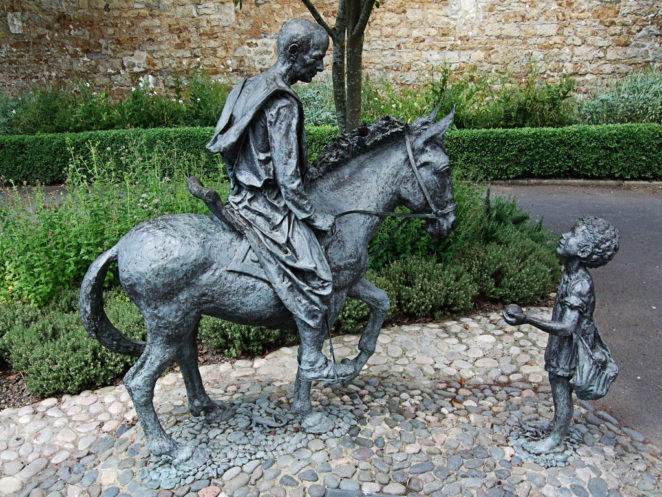Getting Serious about Sigeric
/Statue of Sigeric the Serious in Glastonbury, England
As we continue making our plans for walking the Via Francigena, I’ve felt compelled to do a bit of research on the path and its history. First of all, how did this path get its name? It starts in England and finishes in Rome, so why ‘Francigena’?
The route goes from England to Rome. Why call it the ‘Via Francigena’?
The ‘via’ (route, path, road) has historically had several names over the centuries. The route was originally known as the Via di Monte Bardone which appears to have been the easiest route to travel over the Appenines. As more and more pilgrims headed to Rome, the name changed. According to Wikipedia, ‘the route passes through England, France, Switzerland and Italy [and was thus] known in Italy as the "Via Francigena" ("the road that comes from France") or the "Via Romea Francigena" ("the road to Rome that comes from France"). In medieval times, it was an important road and pilgrimage route for those wishing to visit the Holy See (i.e. the Pope) and the tombs of the apostles Peter and Paul.’ Via Francigena was ‘first mentioned in the Actum Clusio, a parchment of 876 in the Abbey of San Salvatore at Monte Amiata (Tuscany).'
I found it interesting to note that the ‘route’ was really a path, not a typical Roman road. It was also not just one path, but several different rough trails that led in the same general direction. Again, Wikipedia provided considerable information. ‘The Via Francigena was not a single road, like a Roman road paved with stone blocks and provided at intervals with a change of horses for official travelers. Rather, it comprised several possible routes that changed over the centuries as trade and pilgrimage waxed and waned. Depending on the time of year, the political situation, and the relative popularity of the shrines of the saints situated along the route, travelers may have used any of three or four crossings of the Alps and the Apennines. Another important point is that unlike Roman roads, the Via Francigena did not connect cities, but relied more on abbeys.’
According to the Via Francigena website, ‘It is mainly due to travel diaries, and in particular the records of an illustrious pilgrim Sigeric the Serious, that we can reconstruct the ancient route of the via Francigena. In 990, after being ordained Archbishop of Canterbury by Pope John XV, the abbot returned home and on two handwritten pages noted the 80 “mansions” where he rested. The diary of Sigeric is still considered the most authoritative source for the direction of the route, and often it is called "the via Francigena according to Sigeric" to define it as a more "philological" path.’
During this time, ‘the holy places of Christianity were Jerusalem, Rome and Santiago de Compostela, and the via Francigena became the central hub of the great ways of faith. In fact, many pilgrims coming along the way from the north to Rome would continue along the via Appia towards the ports of Puglia, where they would embark for the Holy Land.’ Now that would really be a long walk and we think our upcoming walk from Rome to Canterbury is long!
Pope Benedict XVI wears a pallium above, the white y-shaped vestment with red embroidered cross.
It seems that even though a missive from the Pope confirmed that Sigeric was promoted to the 27th Archbishop of Canterbury, it wasn’t until he made his trip to Rome and received his ‘pallium’, a liturgical vestment, that it was really official and he could exercise his archbishopric powers.
Another probing question? Who exactly was Sigeric and why was he so serious? It’s not surprising that not much is known about him. ‘It is known that he was a monk at Glastonbury Abbey and became abbot of St Augustine’s Abbey, Canterbury, in 980. He was consecrated as Bishop of Ramsbury in 985 and Archbishop of Canterbury in 990.’ It appears that the ‘serious’ part of his name was either due to the fact that he was a devoted scholar and learned man or perhaps it’s a direct translation of his name Sigeric to the Latin ‘serio’. It’s highly possible that he was a real comedian with a great sense of humor. Who knows? He died in 994 and is buried at Christ Church in Canterbury.
We’re hoping to visit him when we end our walk in Canterbury next summer and thank him for being such a good diary-keeper. Otherwise we would have been looking for another route to walk.
Check out more of our pre-Via Francigena activity as we get closer & closer to the departure date.




